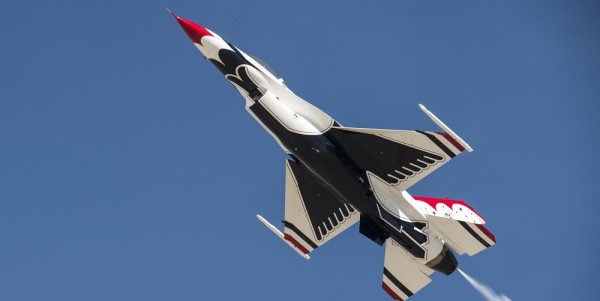

Within just 48 hours this week, four military aircraft crashed — unrelated incidents, but a cluster of disasters that is becoming depressingly familiar.
Four Marines died when their CH-53 Super Stallion crashed during training. A Marine AV-8B crashed during take-off and a Marine CH-53E was damaged during a landing in Djibouti. And then an Air Force F-16 Thunderbird crashed, killing the pilot.
The back-to-back crashes prompted Djibouti to ground all U.S. military aircraft, resulting in the U.S. cancelling the rest of an exercise in that country.
The weeks before were hardly any less grim. Eleven service members were killed in March in two separate crashes involving an Air Force Pave Hawk HH-60 and a Navy F/A-18F Super Hornet. Some experts believe the military’s straining operational pace is fueling the aviation crisis.
This recent spate of crashes is not even the deadliest in recent history: Last July, 15 Marines and a sailor were killed when an aging Marine Corps KC-130T tanker crashed in Mississippi. Less than a month later, another three Marines died when their MV-22B Osprey went down off Australia.
Military pilots are flying aging planes and helicopters that have been used constantly since 2001 – many of which should have been retired years ago. And the new planes designed to replace them have been beset with delays and ballooning costs.
U.S. military pilots are at risk as they fly old battle-worn aircraft, said Todd Harrison, an aerospace expert with the Center for Strategic and International Studies think tank in Washington.
The numbers of mishaps for certain types of aircraft have been increasing in recent years, Harrison told Task & Purpose on Thursday.
“I think the high op tempo and stress on the force over the past 17 years of continuous combat operations in Iraq, Afghanistan, Syria, and elsewhere is catching up to the U.S. military,” Harrison said.
At a Pentagon press conference on Thursday, one reporter asked if the recent wave of crashes shows that the U.S. military is facing an aviation crisis.
“I would reject ‘wave’ and ‘crisis,’” said Marine Lt. Gen. Kenneth F. McKenzie Jr., director the Joint Staff. “We are going to look at each one in turn. Each one is tragic. We regret each one. I’m certainly not prepared to say it’s a wave of mishaps or some form of crisis.”
The Pentagon will look at each crash in detail to see if any systemic problems or maintenance issues are affecting military aviation, McKenzie said, adding that he was unaware of any widespread issues. However, he acknowledged that having six crashes in such a short period of time is not normal.
One risk military pilots face as they fly older aircraft is that budget cuts have forced the military branches to invest less in maintenance, said retired Air Force Lt. Col. Darren Sorenson, a former F-15 pilot.
“While the maintainers who work on these aircraft as some of the best in the world, they can only do so much with the spare parts they’ve been given,” Sorenson said in an email to Task & Purpose. “One only has to the look at the readiness rates of the aircraft to see that more and more of them are not in a combat ready, or even flyable condition.
“Maintainers often have to go take a part from one (or more) working aircraft to fix another. It’s a constantly revolving shell game. It adds unnecessary work and risk to an already heavily tasked platform.”
